Unrecap of Google Sprint Conference ‘18
Instead of writing a recap, I decided to share a story about my personal relationship with design sprints and how the conference provided me with validation, clarity, pride, and inspiration for the journey I’ve been on over the past few years… plus a few pics :)
Learning to lead
Brody, my 7-year old, appeared through the trees that border our backyard and his school. A big smile on his face, he was happy that his first full week of school was over. He hugged my waist, handed me his backpack, and darted inside. I found him in the kitchen, shoveling handfuls of goldfish down his throat, washing them down with apple sauce.

I asked him about his day while emptying out his school folder. I rifled through a stack of graded homework, PTA notices, and school fundraisers before coming to a workbook of stapled papers. The cover was titled, My Growth Mindset. I thumbed through the pages, carefully reading the questions and assignments. They had spent the last few days learning about fixed and growth mindsets. And now an ear-to-ear smile stretched across my face as I read the answers he had scribbled down, reconsidered, erased, and rewrote.
I asked him to tell me what he had learned. With a mouth full of goldfish he exclaimed, “It’s how our brains work!” Taking a few seconds to swallow and continue, “We can learn to do anything we put our brain to.” I asked to clarify, “Our minds to?” He confirmed, “Yep!”
His eyes widened a bit when I explained that plenty of adults do a poor job of maintaining a growth mindset, including myself… but I’m working on it.
He asked, “How?” I said, “Well, sometimes when things don’t go the way you expect, you hear this voice in your head that tells you — ‘Don’t do that again. You’re no good at it.’ And other times, other people are the voice in your head that tells you to quit, and sometimes you actually listen!”
I hugged him and told him how proud I was of him for learning something so important. After he ran outside to play, I emailed his teacher to share my sincere appreciation for teaching his class such a powerful lesson.
Less than a week later I was sitting at Google’s Sprint Conference and, by fate, growth mindset was a topic I found myself in the midst of on 2 separate occasions. In 1 of those discussions, my favorite hugger, Diana Liu, asked me, “Where are you, Jay, on the fixed vs. growth mindset spectrum?” I told her, “I’m a recovering fixed mindset.”When she asked me to explain, I shared New Haircut’s story with design sprints.
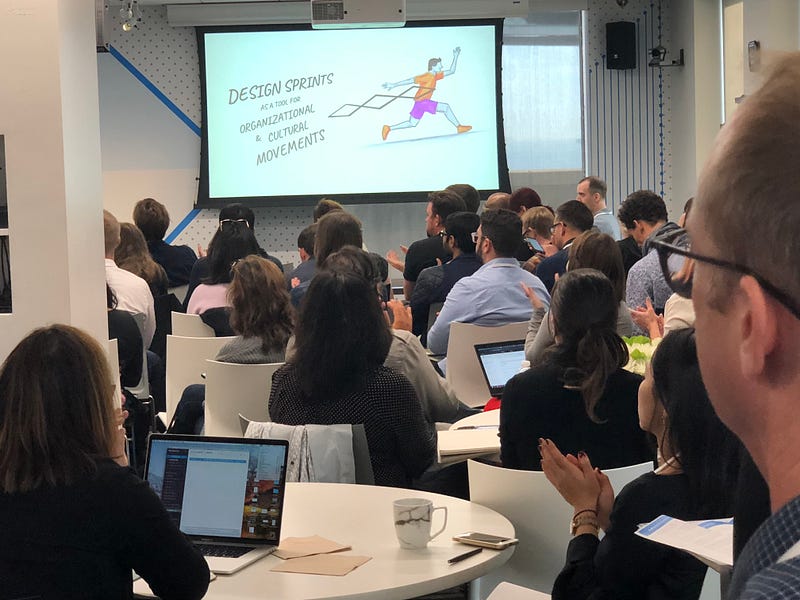
Discovering design sprints, fear, and leadership
When New Haircut was still an app dev studio, our product development process was pitted with gaps and mis-steps. That ultimately meant nearly every product we launched was doomed from the start.
In search of better tools we started researching GV’s use of design sprints (before the book). We suspected they could help improve our methods. To be honest, my initial reaction was, What the hell is 1 week gonna change?
Still, we decided to give sprints a shot. And even though that fated first sprint in the winter of 2015 left a lot to be desired, it almost immediately set off a chain of events that forever changed our company.
Yes, we started creating better products. More importantly, there was a shift in how we worked together, the people we attracted (and stayed with us), the companies we worked with, and the overall pride we felt about the value we were now offering. We had a new North Star that would benefit us over the next few years.
But then it happened…
1 day, we signed a contract for a new customer. Good news, however our typical delivery team was booked solid. That meant for the first time in years, I was going to be directly leading a client’s product strategy. Given my sales role in the company, I had drifted far from the day-to-day creation of products.
After the excitement of the new contract wore off and reality set it, a wave of fear and anxiety flooded me — I had no idea how to do the job. I was the walking definition of imposter syndrome. And then there was my fixed mindset and introverted nature I’d surely need to overcome to be a real facilitator. To say I was uncomfortable is the understatement of my career.
But since this was my company and I was supposed to be a leader, there was only 1 path — figure it out.
Luckily, colleagues like Ileana Georgiu had become experts in their own right. I asked them for help preparing. I asked them to share stories, challenges, and tips from sprints they had run. I read to learn. I wrote to learn more. And when it came time to run that first sprint, I was as ready as I was going to be.
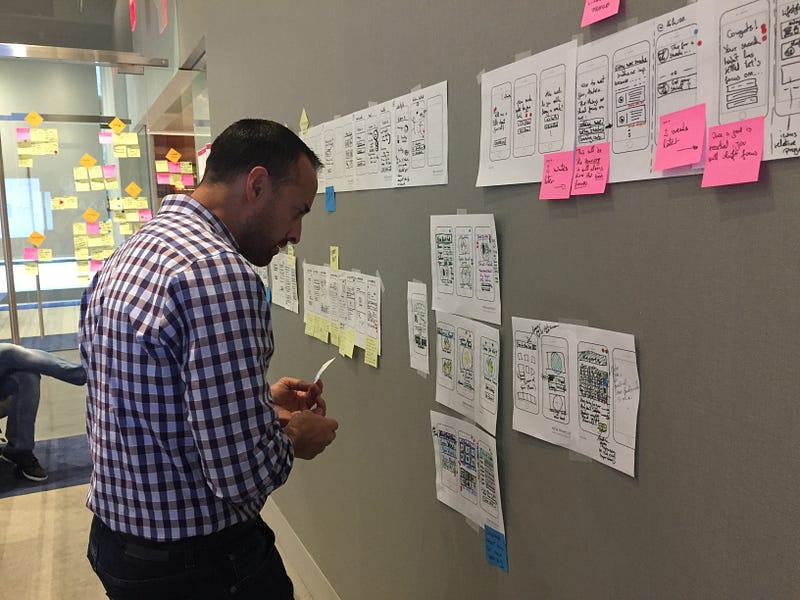
It went much better than I thought it would. But now, with sprint #1 behind me, I was standing at the ledge… too much in love with this new set of tools and way of working to turn back. As with any complex problem, I didn’t know what I didn’t know and that scared the ever-living shit out of me. I would need to unlearn and relearn everything.
But how can the leader of a group of people accept a beginner’s mindset? With a growth mindset and by following the will and leadership of my team.
These last few years have been humbling for me. I’m still learning a ton; constantly fighting imposter syndrome — to the point that I questioned attending this year’s Sprint Conference. Thankfully, I made the right decision.
Here’s what left me most inspired from the conference and the leadership it takes to do the work we do.
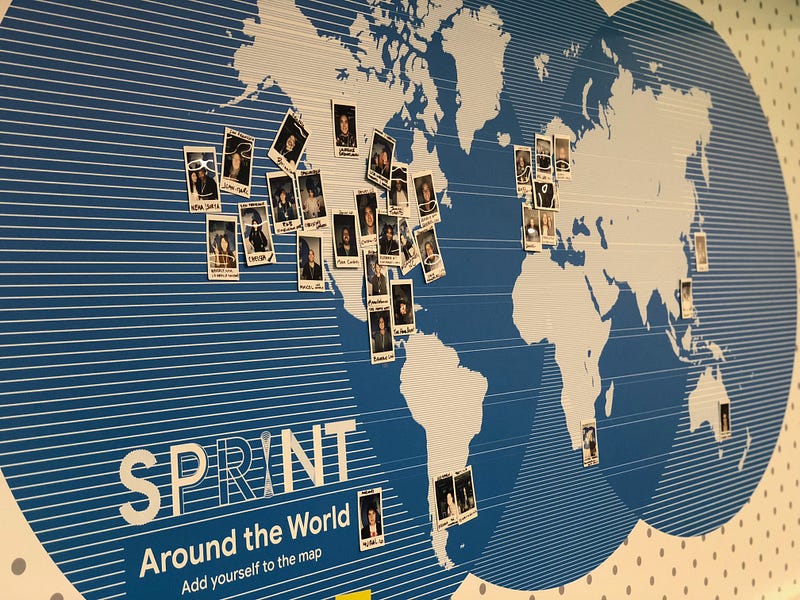
Design sprint masters = business leaders
While design sprints are the common thread between everyone that attends this conference, we show up to learn and be inspired by others.
Person after person that I met, caught up with, or listened to over these past couple days (and otherwise over the past year) validated for me that the journey I’ve been on, has been theirs too — all of it. The struggle, uncertainty, fear, love, frustration, excitement, disappointment, and fulfillment.
Nadya Direkova led a panel specifically about leadership in design sprints. Throughout the talk, her face brimmed with grace and gratitude. Meanwhile, she’s responsible for training thousands of Google’s design sprint leaders. She is the epitome of servant leadership.
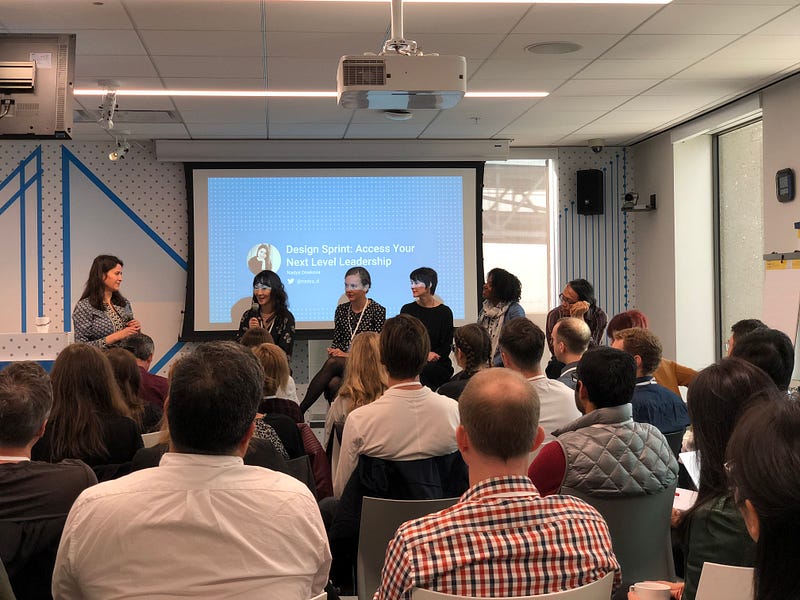
Gretchen anderson encouraged us to harness the power of storytelling when leading our sprints — because if we don’t own our stories, someone else will.
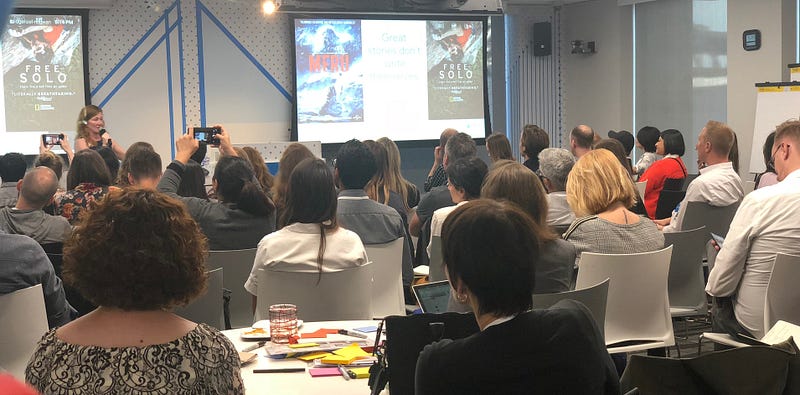
Brooke Creef shared how she read the Sprint book and then threw herself into the fire by signing up to lead Home Depot’s very first sprint to rethink the home page of homedepot.com. A true leader in the world of enterprise sprints.
Dana Vetan took us all to school with her talk on biases. True leaders don’t ignore biases but anticipate them and navigate the impact they’re sure to cause on our sprints, products, and businesses.
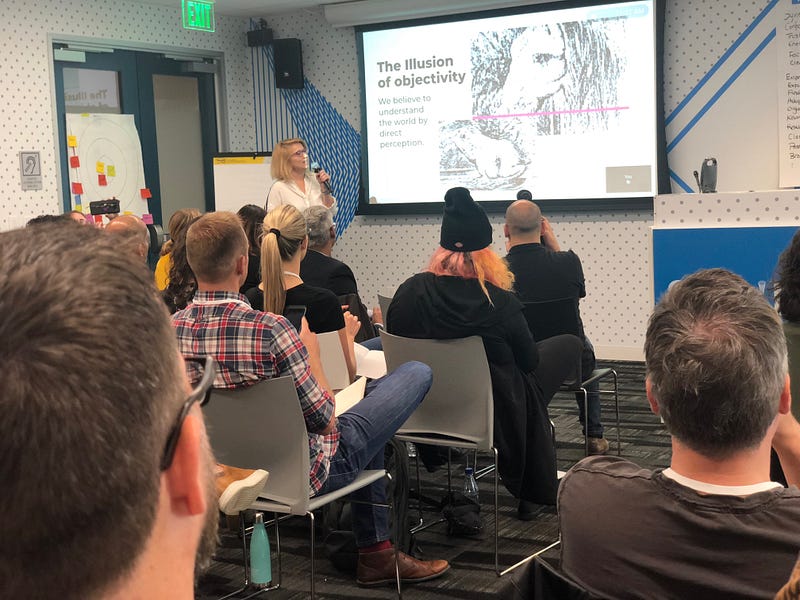
Alexandra Jayeun Lee, having run a handful of design sprints, agreed to step into a leadership role at Civic Design Lab. Her innovative work is shaping the future of the city of Oakland.
Kandis O'Brien shared her stark realization that, after years of considering herself to be a leader, she was really just being a micromanager. Check — sounds familiar!
Charbel Semaan started his talk by asking how many people in the crowd felt like imposters — a sea of hands went up among, what I consider to be, some of the biggest design thinking leaders on the planet.
Daniel Stillman, Meeta Patel, Jenny Gove, and Richard Kelly challenged us to work in teams to rank the qualities we want in our sprint facilitators — leadership, of course being at the top.
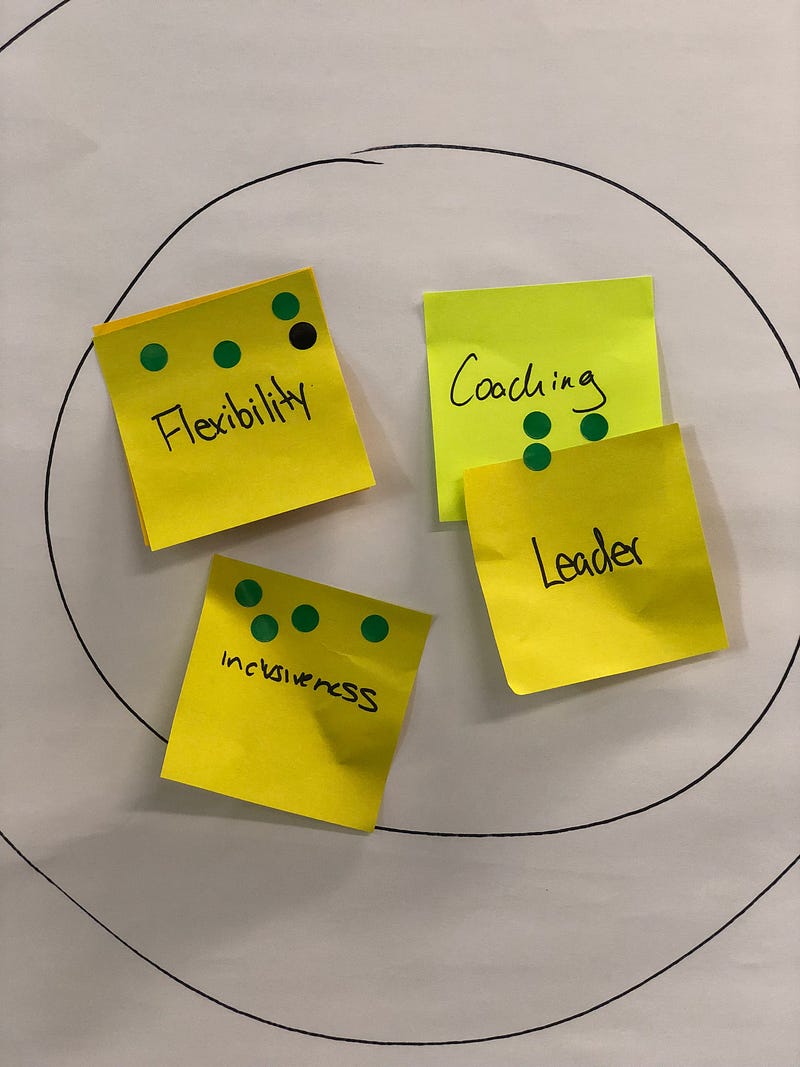
And then there’s Kai Haley. Having the courage and leadership to bring all of these leaders and change-makers together. Thank you, Kai.
In reality, there were 160ish leaders that attended this year. Each had a story that was more inspiring than the next. I wish I could have captured and shared them all. But there’s always next year.
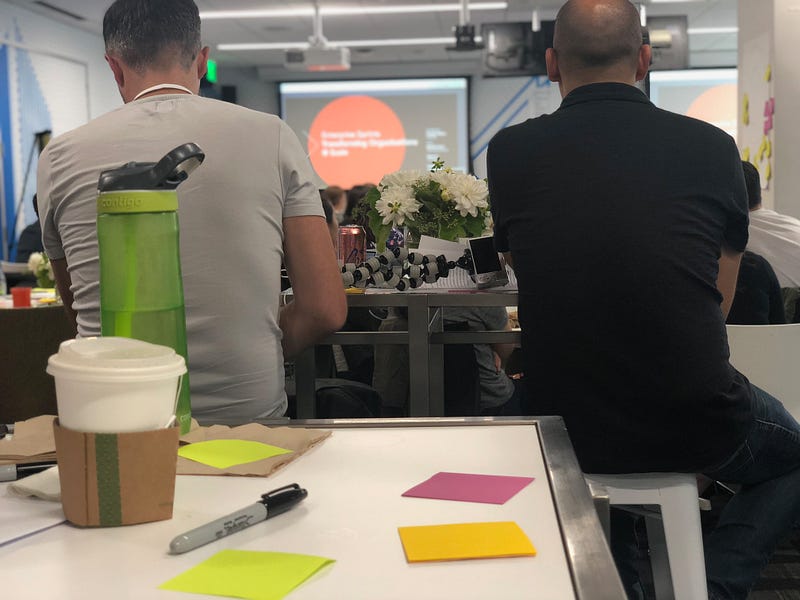
Wrapping up
To those removed from design and product, design sprints are just 1 tool we use to do our job — fair enough. But what I’ve appreciated most about this conference over the past 2 years is learning about the significance sprints have had on everyone’s lives.
For so many of us, sprints have provided a set of tools to fix broken lines of communication. To step into leadership roles. To get promoted. To prove we’re not crazy. To get shit done.
For New Haircut, sprints catalyzed our digital transformation (real talk) from a commoditized dev shop to a group capable of delivering true value.
For me, sprints provided an entry point back into the world of product design — what I love doing most. But most importantly, with the confidence and growth mindset to acknowledge that I always had it in me, I just needed to rediscover it for myself.
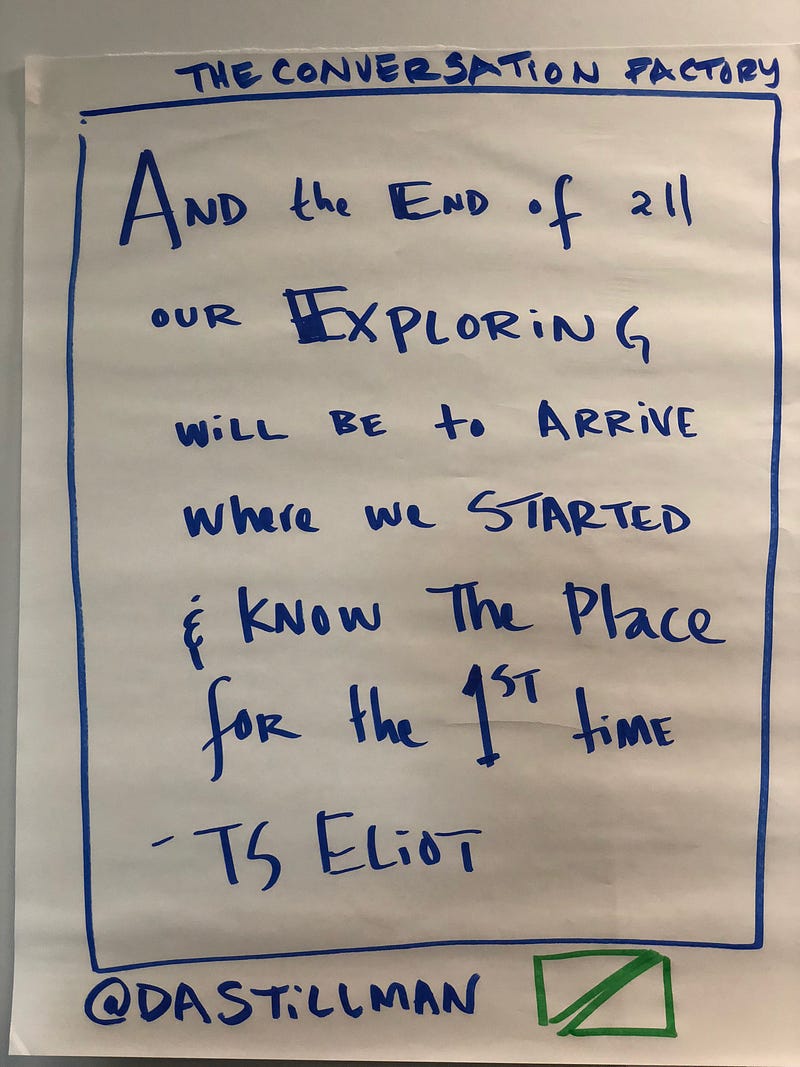
Thanks to Daniel Stillman for a great workshop on Abstraction Laddering that ended with this perfect quote.
Want to be a leader in the sprint community?
Since 2015, New Haircut has been recognized as a global leader in design sprints. Now, we’re looking to help others achieve the same success with their sprints with our Design Sprint Toolkit.
The toolkit includes all of our digital templates, presentation slides, pro tips, and dozens of sprint upgrades. Included are versions that support remote (virtual) or in-person sprints.
This toolkit is 100% comprehensive and ready-to-use, today.



